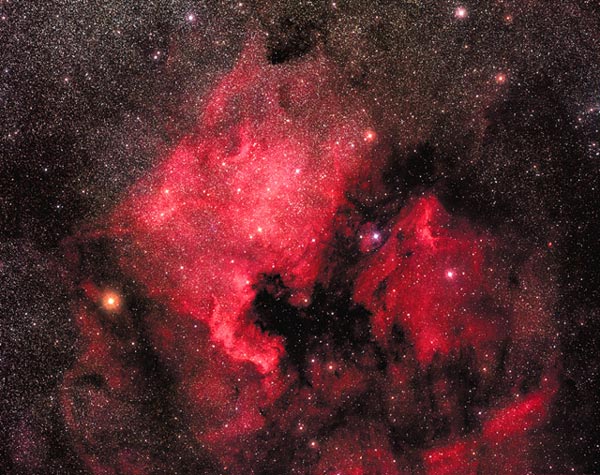
|
Credit & Copyright: Jason Ware
Explanation:
Here's a familiar shape in an unfamiliar location!
This
emission nebula
is famous partly because it resembles Earth's continent of North America.
To the right of the
North America Nebula, cataloged as
NGC 7000, is a less luminous
Pelican Nebula.
The two emission
nebula measure about 50 light-years across,
are located about 1500
light-years away, and are separated by a
dark absorption cloud.
The nebulae can be seen with binoculars from a dark location.
Look for a
small nebular patch
north-east of bright star
Deneb in the constellation of Cygnus.
It is still unknown which star or stars
ionize the red-glowing
hydrogen gas.
|
January February March April May June July August September October November December |
| ||||||||||||||||||||||||||||||||||||||||||||||||
NASA Web Site Statements, Warnings, and Disclaimers
NASA Official: Jay Norris. Specific rights apply.
A service of: LHEA at NASA / GSFC
& Michigan Tech. U.
Based on Astronomy Picture
Of the Day
Publications with keywords: nebula - North America Nebula - emission nebula
Publications with words: nebula - North America Nebula - emission nebula
See also:
- APOD: 2025 September 19 Á The NGC 6914 Complex
- APOD: 2025 September 10 Á The Great Lacerta Nebula
- APOD: 2025 July 21 Á Cats Paw Nebula from Webb Space Telescope
- APOD: 2025 July 16 Á The Rosette Nebula from DECam
- APOD: 2025 July 5 Á Ou4: The Giant Squid Nebula
- APOD: 2025 June 26 Á The Seagull Nebula
- NGC 6164: A Dragon s Egg
